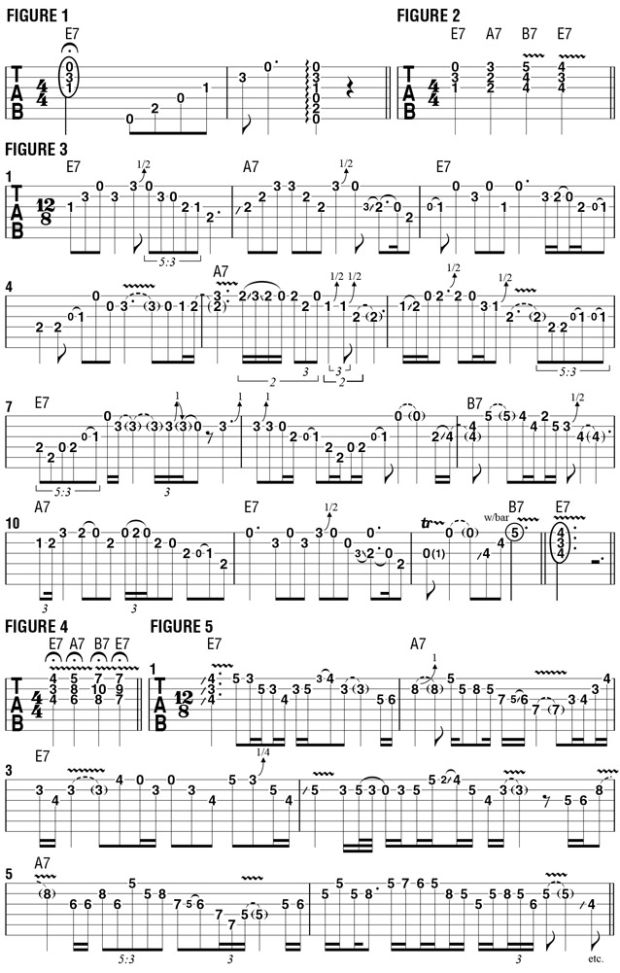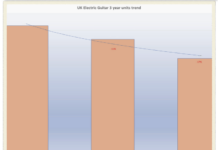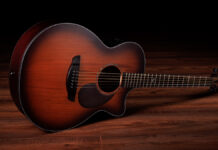
Blues Shapes: Using Triadic Forms As Soloing Templates
A common area of study for all guitarists is the understanding and musical application of chord forms, which is essential to the development of rhythm guitar parts, arrangements and accompaniments.
Chord forms can also provide useful templates of fretboard shapes for improvising melodic lines. This focus of study becomes even more interesting and varied when one expands it to a chord progression and the sequence of specific chord shapes, which may be used as navigational tools for crafting single-note melodies.
An effective way to get attuned to this concept is to apply specific chord types and the movement from shape to shape (including the technique of voice-leading) to a standard 12-bar blues form. In the examples presented in this lesson, we’re working within the context of a 12-bar blues in E, moving between the one chord, E, the four chord, A, and the five chord, B.
For the purposes of this column, we’ll focus on three-note dominant seven shapes, played on the top three strings. FIGURE 1 illustrates the full six-string form of a standard first-position E7 chord, as well as the shape that falls on the top three strings. In FIGURE 2, we move from E7 to A7 to B7, and then back to E7, played in a higher positions, using voice-leading technique.
When moving from E7 to A7, the G# note on the third string moves up one fret to A while the D on the second string moves down one fret to C#; the open E note on top moves up a step and a half to G. This A7 shape then moves up two frets to B7. Voice-leading is employed again when moving from B7 to the final E7 shape, as the D# note on the B string’s fourth fret moves down one fret to D and the A note on the first string moves down one fret to G#.
Let’s now use these shapes as a template for creating solo lines, as demonstrated in FIGURE 3. I begin by picking the notes of the E7 chord shape individually (a technique known as arpeggiation) and then play a descending line based on the E minor pentatonic scale (E G A B D) while adding the major third, G#. In bar 2, I again begin by arpeggiating, picking the notes of A7 in succession before switching to a line based on the E blues scale (E G A Bb B D). I continue with this approach until bar 9 and the arrival at B7, at which point that chord’s shape becomes the template for the remainder of the solo.
The next step is to move to the next higher set of dominant-seven shapes on the top three strings, as shown in FIGURE 4, followed by a soloing example with the same principles applied (see FIGURE 5).

Source: www.guitarworld.com












